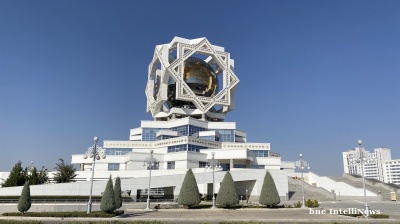Slovenia has seen a high level of activity by retailers over the last three years, but investment is expected to slow as the eurozone crisis bites across the region.
Slovenia is one of the smaller markets in the Central and Southeast Europe (CEE/SEE) region with a population of just over 2mn. Yet this is largely outweighed by the fact that Slovenia has the highest GDP per capita across both the Central and the Southeast European regions, according to World Bank data, with only Estonia and the Czech Republic coming close.

GDP per capita across Central and Southeast Europe. Source: World Bank Databank.
“[The] retail market in the country has been highly supported by large purchasing power potential, which has been encouraging for retailers,” says Jana Jovanovic, senior research analyst at international commercial real estate firm CBRE in Belgrade.
While bne IntelliNews' research has shown that both market size and income level are important when fashion retailers are expanding internationally, Slovenia’s relative prosperity has made it an entry point to the region for retailers.
“Slovenia is a stable macroeconomic environment and well-developed retail market. Over the years, Slovenia was the market entry point for various retailers looking to expand further in SEE markets. Retail market in the country has been highly supported by large purchasing power potential, which has been encouraging for retailers,” Jovanovic told bne IntelliNews.
Probably the most hyped arrival of the last 12 months was fast fashion giant Primark, which picked Slovenia’s Citypark mall in Ljubljana to open its long-awaited first store across the Central and Southeast Europe region.
Citypark’s operator, SES Spar European Shopping Centers, reported “thousands of enthusiastic customers” turning up for the opening of the Ireland-based retailer, and forecast that “Primark will enable Citypark to further bolster the city of Ljubljana as a shopping destination.”
The fast fashion retailer is now aiming for further expansion in the region, having announced plans for stores in Prague and Warsaw this year.
Other international retailers also announced expansion plans in Slovenia, among them Ikea, which started construction of its first store in the country in 3Q19.
Among the major domestic players, Slovenia’s largest retailer Mercator announced in a bourse filing in December it is entering a “new investment cycle where the most important investment is the logistics distribution centre in Ljubljana and investments in logistics capacities and network expansion in Serbia”. The group plans investments of €44mn in 2020, of which 57% will be allocated for projects in Slovenia.
As retailers target Slovenia, the country’s retail space is also being added to. “Ljubljana and other smaller cities are well supplied with retail offer, including various formats such as shopping centres, retail parks, big boxes, etc.,” says Jovanovic.
As of 3Q19, 50,000 sqm of shopping centres were under construction in the Slovenian capital, according to CBRE data. Those due to come online in 2020 include Austrian SES Spar European Shopping Centres’ 32,000-sqm Aleja shopping centre and the expansion of Supernova Rudnik.
International investors, specifically from neighbouring Austria, have been on an acquisition spree for Slovenian shopping centres in the last couple of years.
In addition to SES Spar European Shopping Centres’ Aleja shopping centre, fellow Austrian developer Supernova bought 10 Mercator shopping centres, and said it would invest €10mn to refurbish and rebrand them.
Yet another Austria-based developer, Immofinanz, bought eight retail parks in Slovenia, Serbia and Croatia in 2018 for a combined €90.5mn as it expands its Stop Shop retail park brand in the Balkans. The real estate package in Slovenia included three retail parks in Maribor, Krsko and Ptuj with roughly 22,000 sqm of rentable space, bringing the company’s Slovenian retail park portfolio to nine locations.
In late 2019, Immofinanz followed this up with the purchase of five more shopping centres in Slovenia, bringing its Slovenian portfolio of Stop Shop retail parks to 14.
Investment slowdown looms
“Slovenia and other well developed SEE countries have noted vast [number] of investments over the previous three years. The investment activity in the previous 12 months in Slovenia has been tremendous, yet the overall investment activity is expected to slow down in the upcoming period,” said Jovanovic.
As a small open economy, closely interlinked with fellow EU members, Slovenia is not expected to be immune from the slowdown in the eurozone. The European Commission’s Winter 2020 Economic Forecast anticipates that GDP growth across the eurozone will remain steady at 1.2% in 2020 and 2021, amid a challenging external environment, though the slowdown will be mitigated by internal positives, “continued employment creation, robust wage growth and a supportive policy mix”, though these “appear insufficient to shift growth into a higher gear”, according to the European Commission.
Slovenia’s GDP growth is forecast to be considerably above the eurozone average at 2.7% in both 2020 and 2021, after having slowed down sharply from 4.1% in 2018 to an estimated 2.5% in 2019, as growth in export demand slows.
Features

Slovenian consumers take energy giant GEN-I to court over price hikes
The Slovene Consumers’ Association accused GEN-I of unlawfully raising household prices at the height of the recent energy crisis.

Indonesia's $12bn stimulus play
The coordination between the Finance Ministry and the presidency signals tighter executive cohesion under President Prabowo’s leadership, contrasting with the cautious fiscal stance of prior administrations.

COMMENT: For Asia, dealing with Europe isn’t about achieving success; it’s about concealing failure
To be taken seriously in Asia, Europe must rediscover the courage to deliver, not merely declare. Asia has moved on to execution. Europe is still editing its initial policy draft.

Washington has a new focus on a Caspian energy play
For most of the last three decades since winning independence, Central Asia has been a bit of a backwater. Not any more. The Trump administration is becoming more focused on Turkmenistan's vast gas reserves and can smell money and power there.



